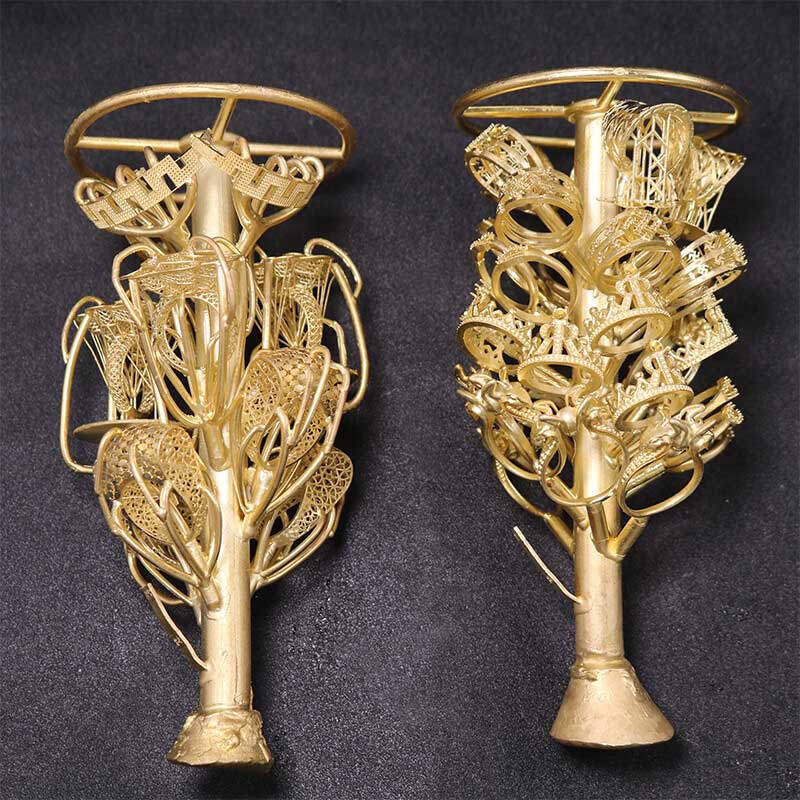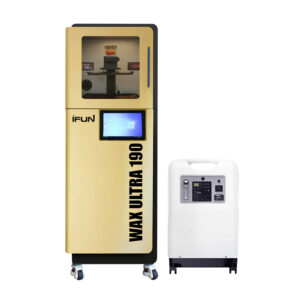When it comes to creating intricate and detailed castings, the combination of 3D printing technology and resin casting offers unparalleled precision. For industries like jewelry making, dental work, and industrial prototypes, 3D printed casts made from resin are becoming increasingly popular. However, when using a 3D resin printer to create casts, there are several common issues that can arise when melting the 3D printer resin into casting molds. This article will discuss these challenges and provide solutions to help ensure a smooth casting process.

Understanding 3D Printed Casts and Resin
Before we dive into the challenges, let’s briefly explore what a 3D printed cast is. These casts are typically created using a resin 3D printer, where resin 3D printing allows for the precise production of models that can later be turned into casts through resin or metal pouring.
The resin 3D print process involves using a specialized 3D printer resin that solidifies under UV light. Once a design is printed, the object can be placed into a mould for resin casting, often made from materials like casting resin or casting resin molds for higher durability. The ability to create detailed designs and then produce accurate resin casts is what makes 3D printing an ideal solution for industries such as jewelry, dentistry, and engineering.
However, when it comes to melting the printed cast resin material or resin for casting, certain issues can emerge that affect the quality and integrity of the final cast.
Common Issues When Melting 3D Printed Resin for Casting
Inconsistent Resin Melting
One of the most frequent issues encountered is inconsistent melting when using 3D print resin casting. Not all resins are made the same, and the resin for casting you use may melt at a different rate compared to others.
Solution: Always ensure you’re using a resin that is suitable for the casting process. Some casting resins melt more uniformly than others. Check for clear casting resin options if transparency and smoothness are important for your casting. Additionally, consider pre-heating your resin casting mold to ensure a more even melting experience.
Resin Sticking to the Mold
When you use resins for casting, one of the most common problems is the resin sticking to the resin casting mold after pouring. This can cause issues when you try to extract the final cast, leading to distortion or even breakage.
Solution: Apply a mold release agent or use a mould for resin casting specifically designed for easy removal. For resin casting molds, choosing a mold material with a smooth interior surface can also help reduce adhesion.
Resin Shrinkage During Curing
Resin shrinkage is another issue that can cause imperfections in your final resin cast. As the resin cures, it may shrink slightly, leading to cracks or gaps in your casting mold.
Solution: Use casting resin that is known for low shrinkage rates. If you’re working with 3D printed cast molds, ensure that the mold material is resistant to temperature changes and shrinkage to keep the printed design intact. Some resin 3D printing materials are formulated specifically to minimize shrinkage during the curing process.
Bubbles in the Resin
Air bubbles trapped in the 3D printed resin during the pouring process can create voids in the final cast. This is especially problematic for those using 3D print resin casting for jewelry or precision industrial work, where even tiny imperfections can ruin the product.
Solution: To avoid bubbles, ensure that the resin is mixed thoroughly before pouring into the mold. A vacuum chamber can help remove air bubbles from the resin before casting. Additionally, pouring the resin slowly and at an angle helps to reduce the chance of air pockets.
Overheating of the Resin
When melting or curing 3D print resin casting, overheating can lead to distortion, excessive shrinkage, or even burning of the resin. This can compromise the quality of the cast resin material and lead to poor results.
Solution: Keep a close eye on the temperature of the resin and the mold. If you are using a 3D printed plaster cast, ensure that the heating process is gradual and within the material’s specified tolerance. Using temperature-controlled curing ovens can help maintain the ideal conditions for a successful cast.
Poor Mold Definition
Another issue may arise if the casting resin doesn’t completely capture the fine details of the original 3D print. This happens when the resin doesn’t fill in all the fine areas of the mold, leading to a final product that is incomplete or poorly defined.
Solution: When selecting a resin 3D printer for your casting, make sure you’re using one with high resolution for fine detail. In addition, choose resin casting molds that are designed to replicate the minute details of the 3D printed object.
Best Practices for Successful Resin Casting
To avoid these common issues and create high-quality resin cast objects, follow these best practices:
- Use the right resin: Whether you are looking for clear casting resin or a specialized material for a particular application, always select the right resin type for the job.
- Preheat molds: This helps to ensure an even resin pour and reduces the chances of resin sticking or uneven melting.
- Use a mold release agent: This will make it much easier to remove the final cast from the mold without causing damage.
- Watch temperature carefully: Both resin and molds should be kept within the recommended temperature range to avoid distortion and ensure the curing process goes smoothly.

Creating a 3D printed cast from resin 3D prints can be an excellent way to achieve highly detailed and accurate molds for a variety of applications. However, common issues like inconsistent melting, resin shrinkage, and air bubbles can affect the quality of your final product. By understanding these challenges and implementing best practices, you can significantly improve the outcome of your resin casting process.
Whether you are using a best resin 3D printer or exploring the possibilities of 3D resin printing, understanding how to handle your resin casts properly will lead to smoother results and more successful projects.

